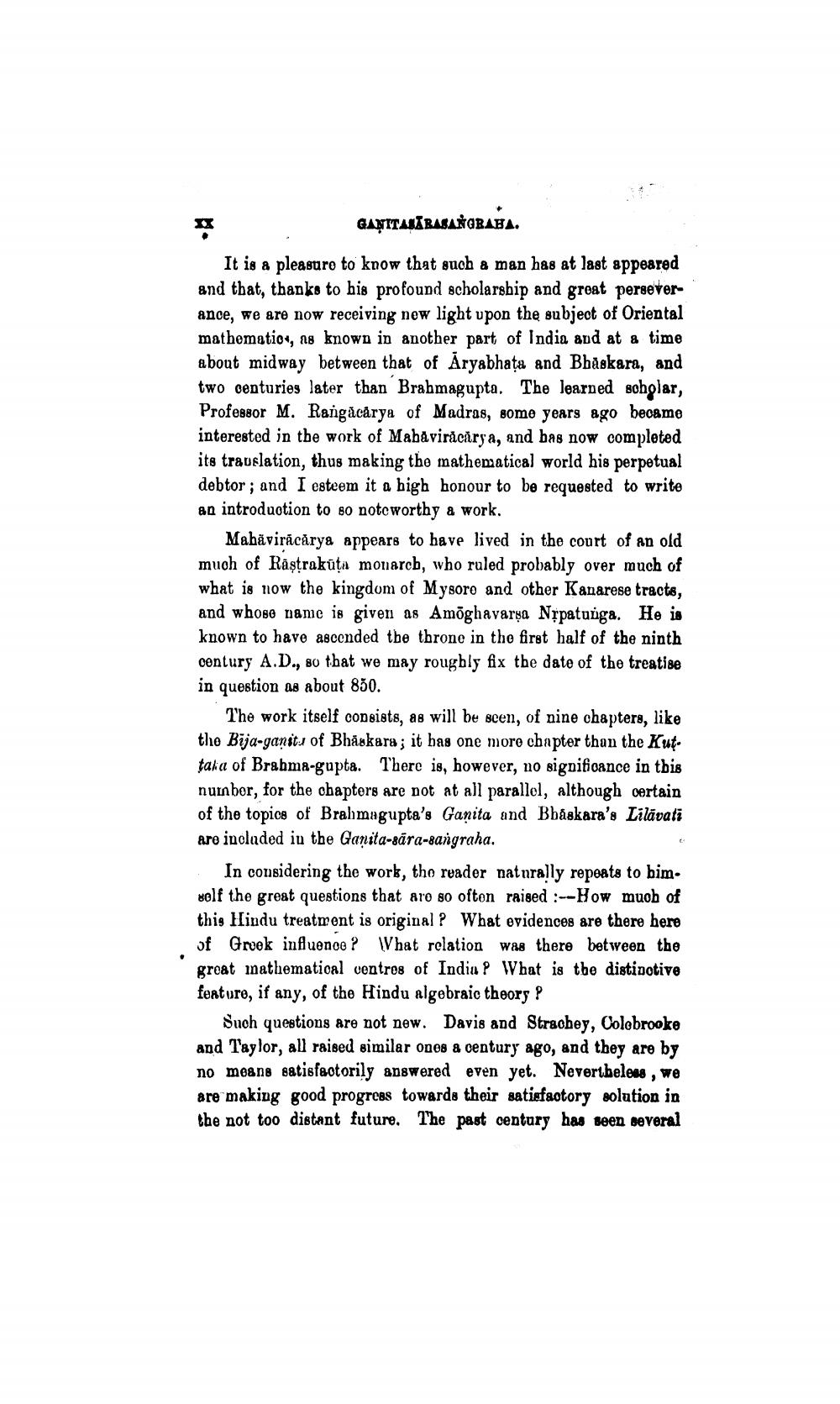________________
GANTTASĪBASANGRAHA.
It is a pleasure to know that such a man has at last appeared and that, thanks to his profound scholarship and great perseverance, we are now receiving new light upon the subject of Oriental mathematios, no known in another part of India and at a time about midway between that of Aryabhata and Bhaskara, and two centuries later than Brabmagupta. The learned scholar, Professor M. Rangåcårya of Madras, somo years ago became interested in the work of Mahaviråcårsa, and has now completed its travelation, thus making the mathematical world his perpetual debtor; and I esteem it a high honour to be requested to write an introduotion to so noteworthy & work.
Mabăvirácărya appears to have lived in the court of an old much of Râştrakūta monarch, who ruled probably over much of what is now the kingdom of Mysoro and other Kanarese tracts, and whose name is given as Amõghavarşa Nrpatunga. He is known to have ascended the throne in the first half of the ninth century A.D., so that we may roughly fix the date of the treatise in question as about 850.
The work itself consists, as will be seen, of nine chapters, like the Bīja-ganit of Bhaskara; it bas one more chapter than the Kut. taka of Brahma-gupta. There is, however, no significance in this nurnber, for the chapters are not at all parallel, although certain of the topios of Brahmagupta's Ganita and Bbåskara's Lilavati are included in the Ganita-sära-sangraha.
In considering the work, the reader naturally repeats to bim. solf the great questions that aro so often raised :--How muob of this Hindu treatment is original ? What evidences are there here of Groek influence? What relation was there between the great mathematical centros of India ? What is the distinctive feature, if any, of the Hindu algebraic theory P
Suoh questions are not new. Davis and Strachey, Colebrooke and Taylor, all raised similar ones a century ago, and they are by no means satisfactorily answered even yet. Nevertheless, we are making good progress towards their satisfactory solution in the not too distant future. The past century has seen several




